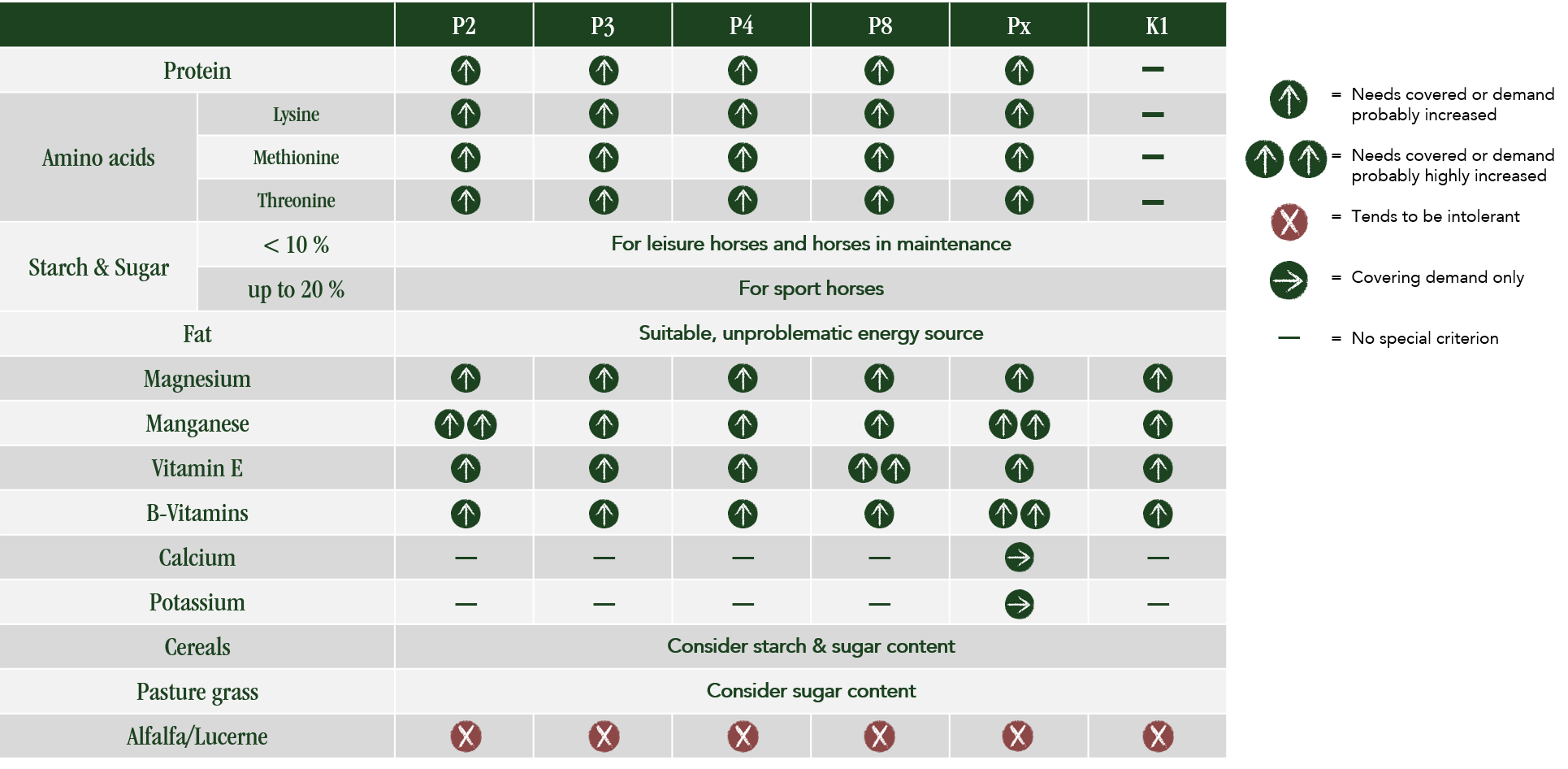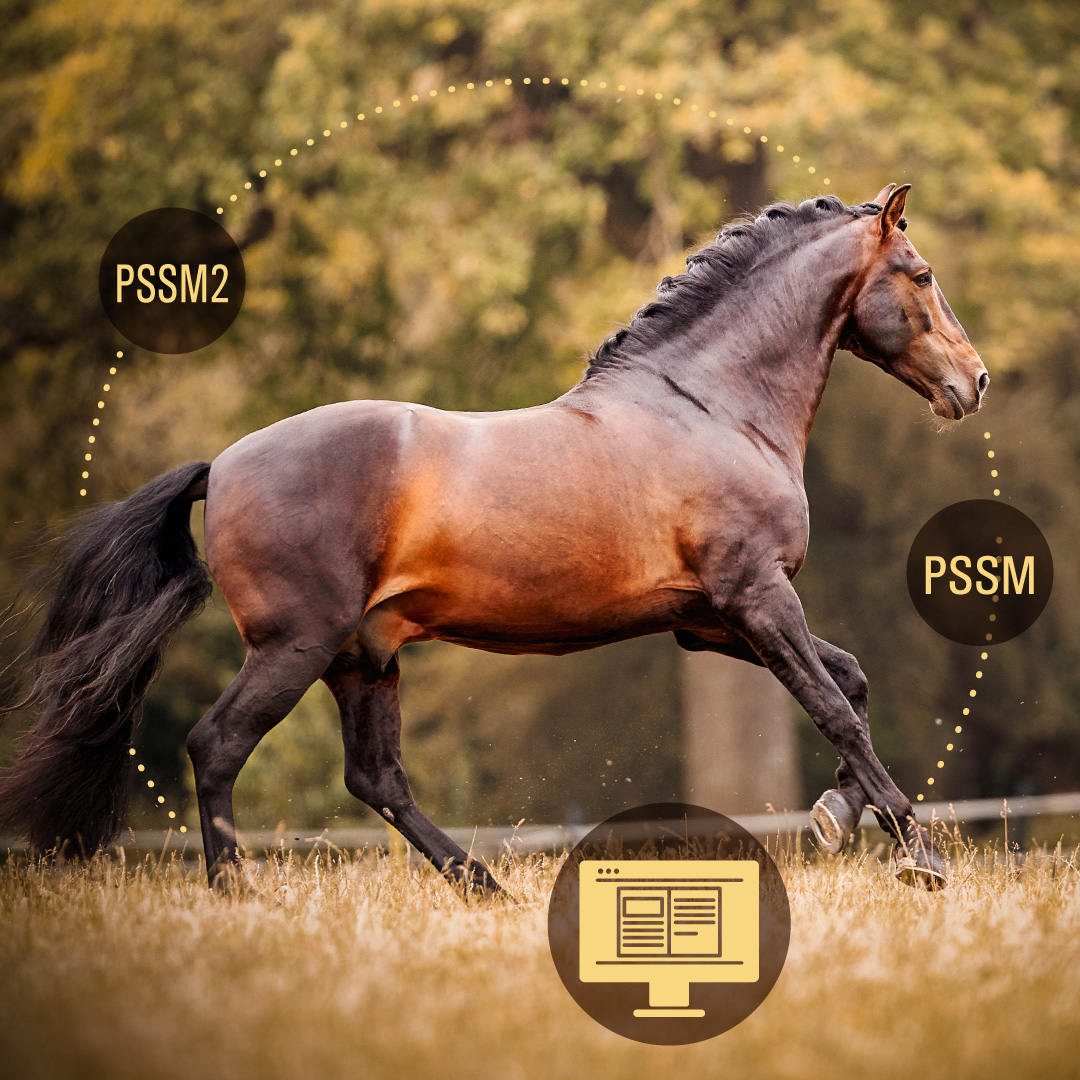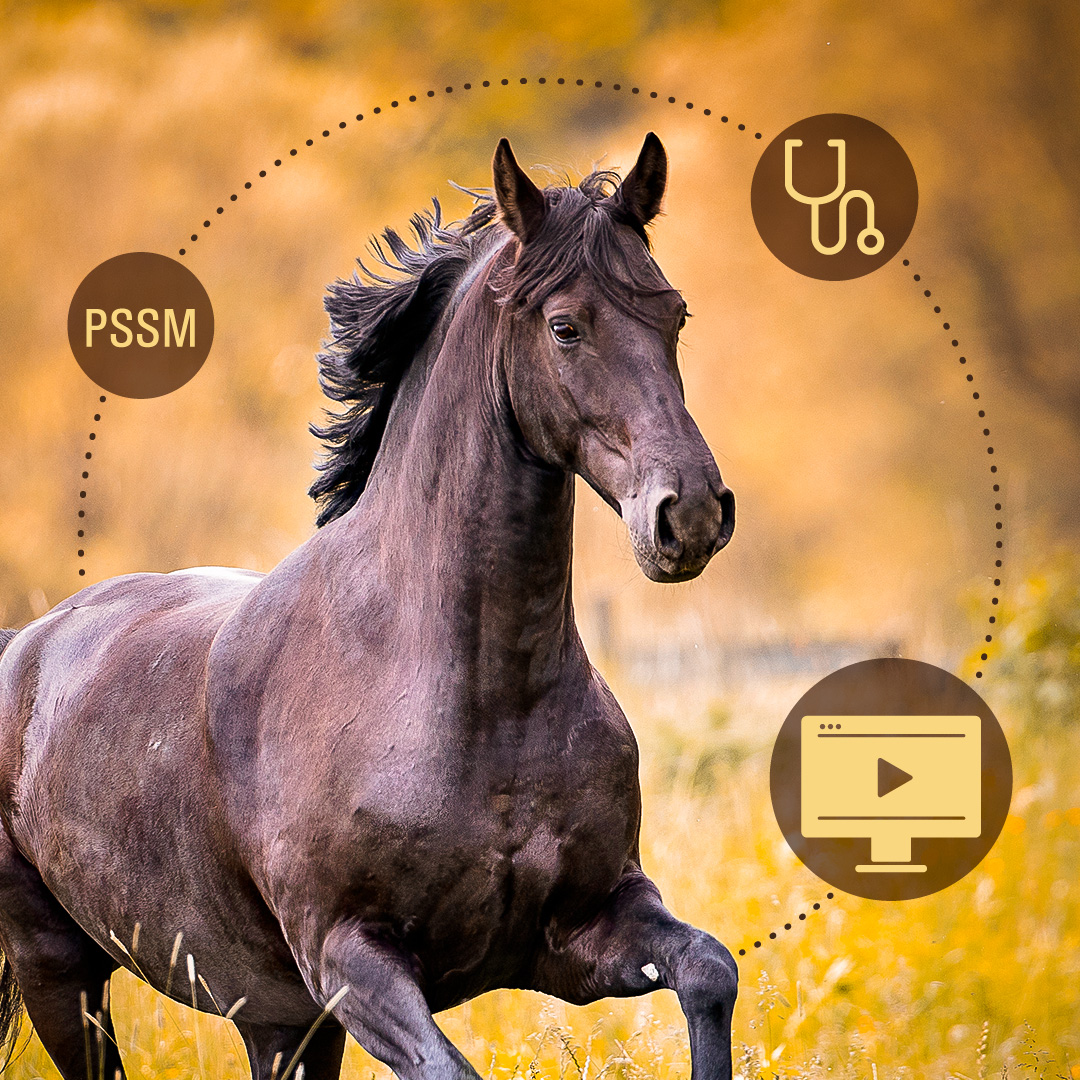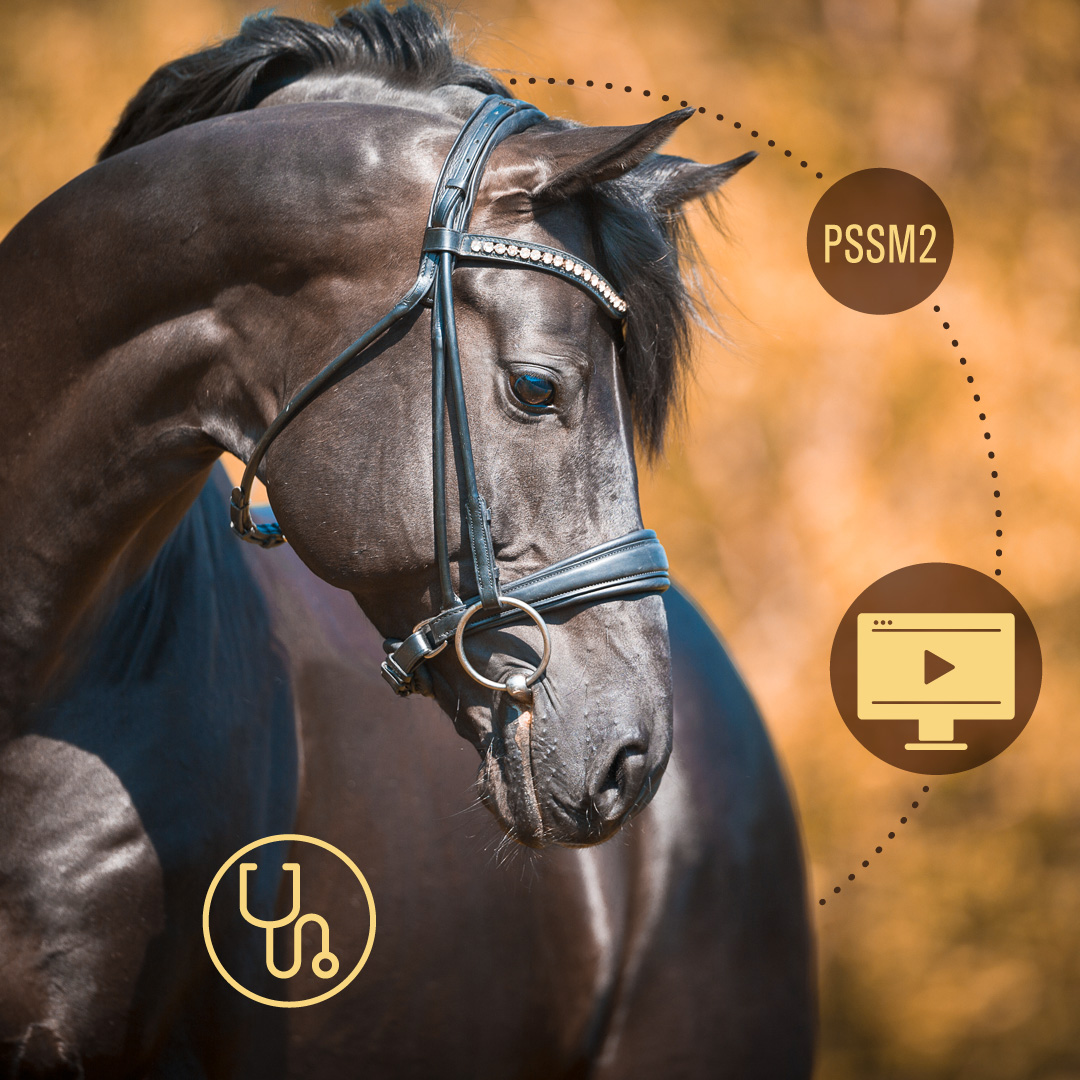KNOWLEDGE

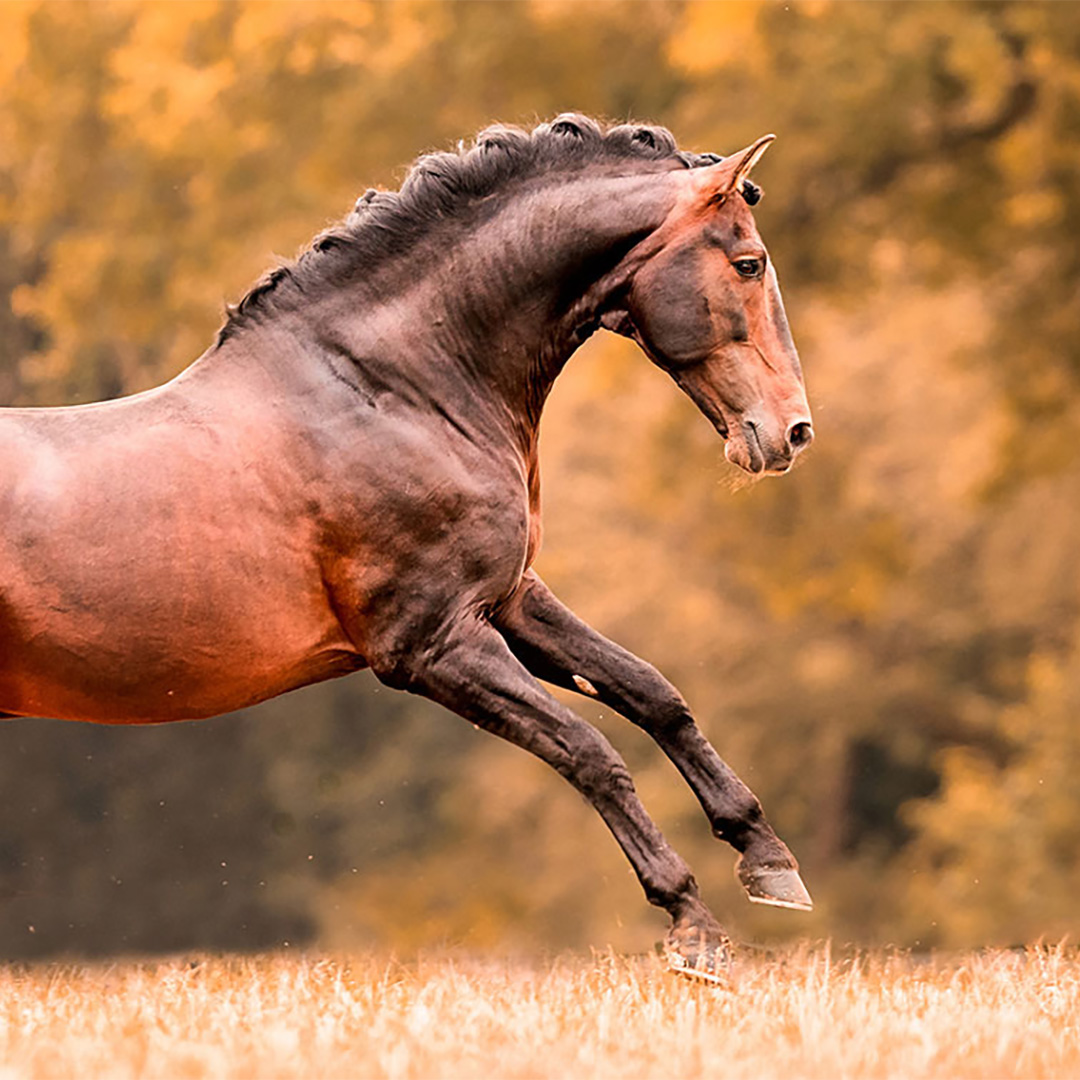
The horse is our sport and leisure partner. Physical activity and exercise are healthy and benefit both us and the horses. But why do many horses have such a hard time with it?
Recurring lameness without an identifiable cause, muscle tension, visible dents in the musculature up to symptoms similar to a Equine Rhabdomyolysis – in these cases, not only the performance, but especially the well-being of the horse is seriously impaired. Diseases of muscle metabolism can be found throughout the entire horse population. The correct feeding management along with the specific nutrient supply is crucial for a horse’s life free of complaints.
We are happy to inform you about equine myopathies and the problems of PSSM 1 and MIM („PSSM2“). Our focus lies on muscle metabolism, symptoms, diagnostics and, in particular, technical feeding solutions and suitable products.
Visualization of the variants in a graphic

© St. Hippolyt | Digital Marketing
Equine myopathies – PSSM1 and MIM (“PSSM2”)
Equine myopathy is a generic term for various forms of genetically caused exertional myopathies, i.e. diseases of the musculature. PSSM stands for polysaccharide storage myopathy, whereby only type 1 (P1) describes a true storage myopathy. Other forms of myopathy are colloquially grouped under the synonym “PSSM2”, because at the beginning of the research it was also assumed that this was a storage myopathy. Today, we know that “PSSM2” includes different muscle disorders, with different variants. Therefore, we now speak of MIM (Muscle-Integrity-Myopathy), which replaces the previous term “PSSM2” and more correctly describes the genetic exertional myopathy. Furthermore, the variants P2, P3, P4, Px, P8 and K1 are distinguished under MIM, with further variants likely and currently the subject of research.
However, what PSSM1 and MIM (“PSSM2”) have in common is the symptomatology and the decisive influence that correct feeding and training management has on the horse’s performance and, above all, well-being.
Even though this condition cannot be cured due to its genetic anchoring, feeding, training and husbandry are decisive for a painful existence or a symptom-free horse life.
Online seminar on musculature & PSSM
In our online seminar on 28 September 2021 by St. Hippolyt and WES for horses, we specifically address the problems of PSSM 1 and MIM („PSSM2“). The focus hereby lies on the muscle metabolism, the symptoms, diagnostics and above all technical feeding solutions incl. product presentation.
1.Topic: The Musculature
2.Topic: PSSM 1 and MIM („PSSM2“)
3.Topic: Adapted feeding for PSSM
Recording and podcast can be found on the following channels:
Presentation on MIM („PSSM2“)
- MIM („PSSM2“) is a genetic mutation with increasing significance and affects all breeds.
- MIM („PSSM2“) is a metabolic disorder of the muscle cell, which is not caused by glycogen storage – in other words, sugar-dependent – as in PSSM1, but triggers structural defects in the muscle cell, which require a constant supply of protein for repair.
- At present, six genetic defects can be tested via DNA examinations using hair roots (P2,P3,P4,P8,K1 and PX).
- Due to the complicated mode of inheritance, even a single altered gene can lead to problems, but the likelihood that a horse will show symptoms increases with the number of altered genes. However, there are also carriers who do not develop any symptoms at all.
- More than 50% of warmbloods appear to carry at least one altered gene. By mating them, we unknowingly are breeding an increasing number of double and multiple carriers that develop symptoms very frequently.
- Usually, symptoms are only observed from the age of 6, but they are also possible in foal age.
- Symptoms are stiffness, tension, unwillingness to move, muscle hardening, muscle depressions, bumps and fissures, saddle pressure, unclear lameness, poor muscle tone, protruding spine, breathing noises without sound, extreme sensitivity, susceptibility to touch, nervousness, unwillingness to be saddled and groomed, and many others.
- Due to proper management, many horses can be maintained symptom-free or at least symptom-poor.
- A grain-free and protein-rich diet, sufficient exercise and training to build up muscles, a supply of essential amino acids, antioxidants and vitamins and trace elements that are important for muscle metabolism contribute to keeping a horse symptom-free.
If you have any questions or need advice, please do not hesitate to contact us !
Subscribe to St. Hippolyt Newsletter
Subscribe now to our regularly published St. Hippolyt Newsletter and stay informed about new products and articles about horse feeding.
The newsletter can be cancelled at any time via a link in the e-mail.

